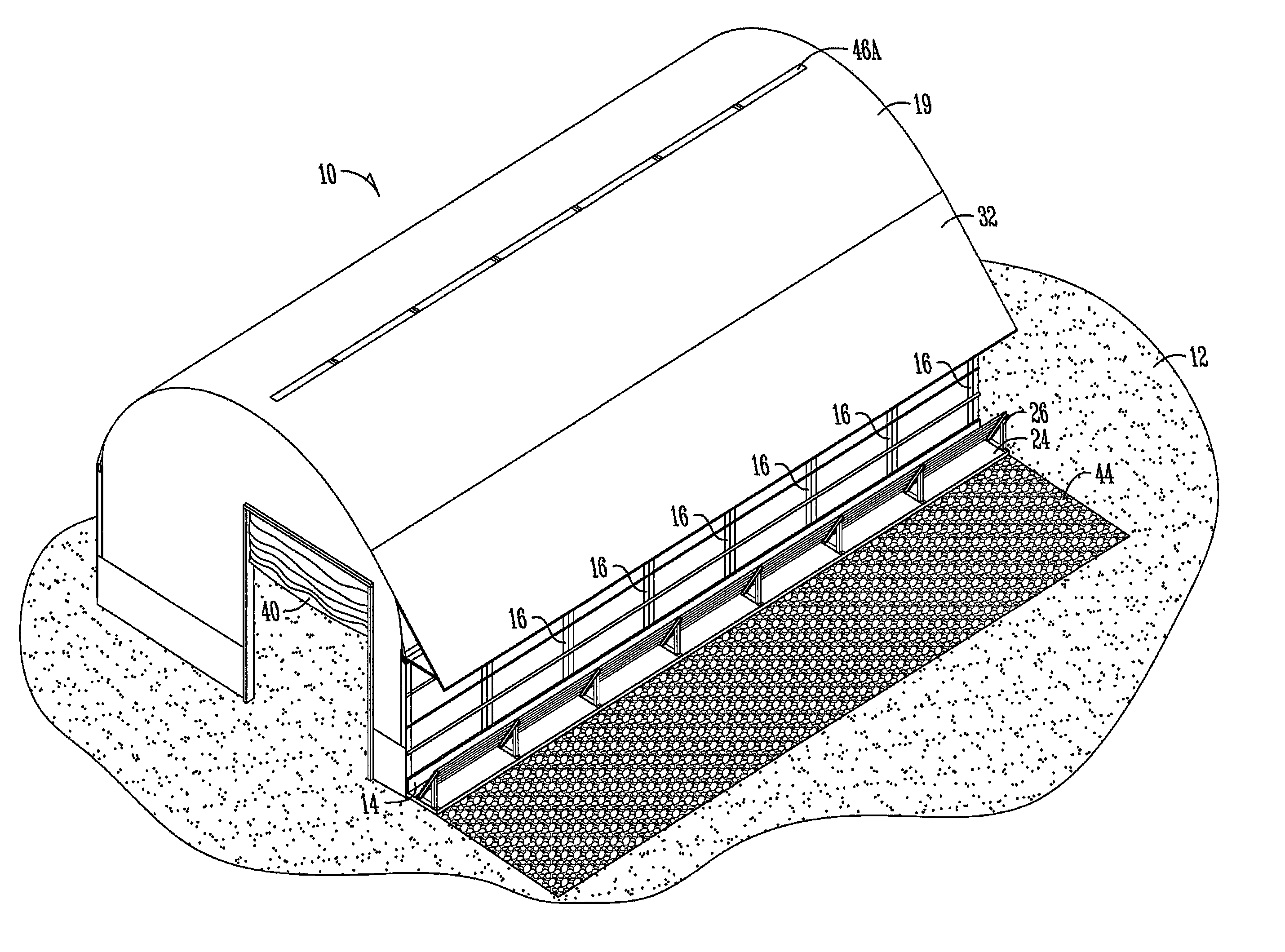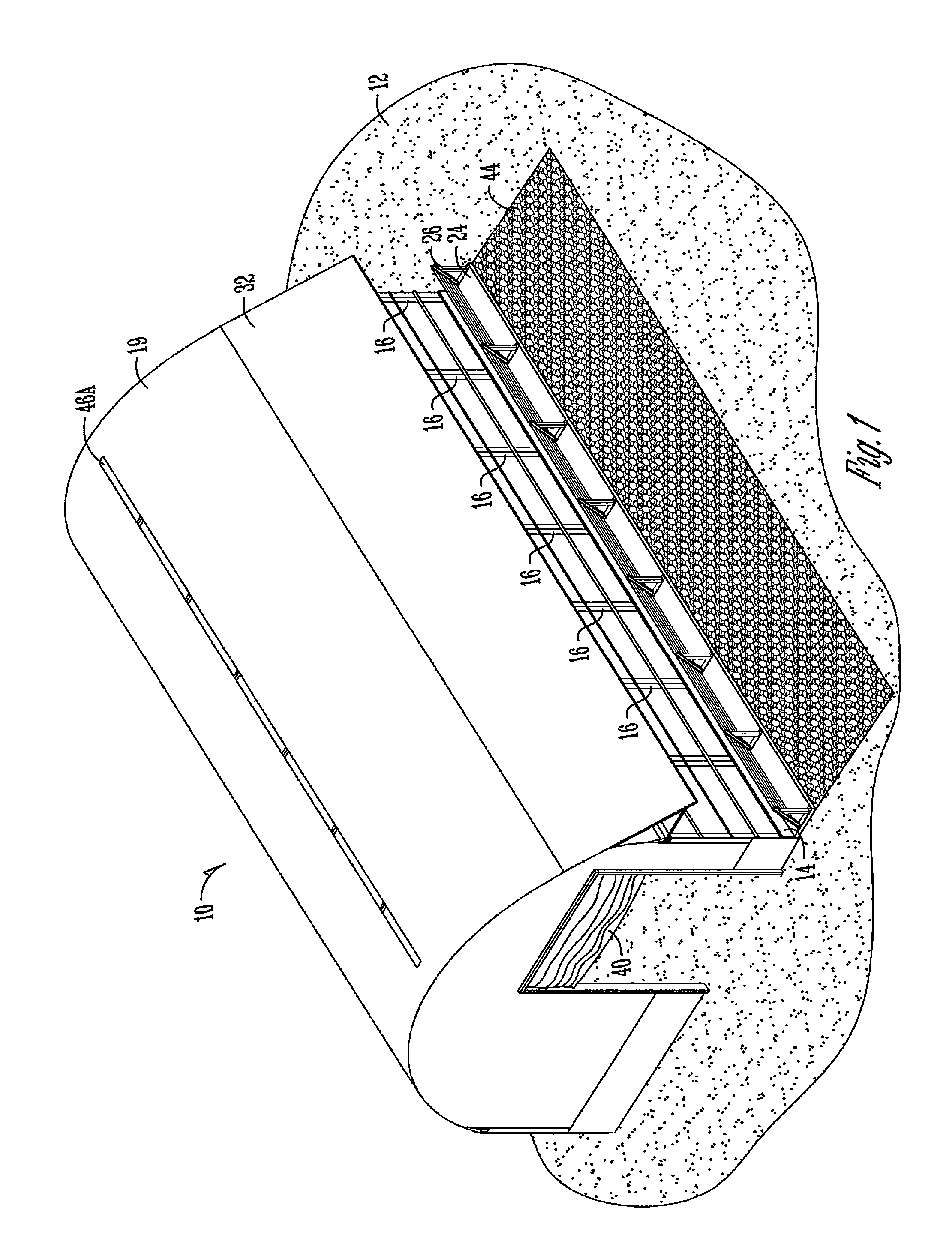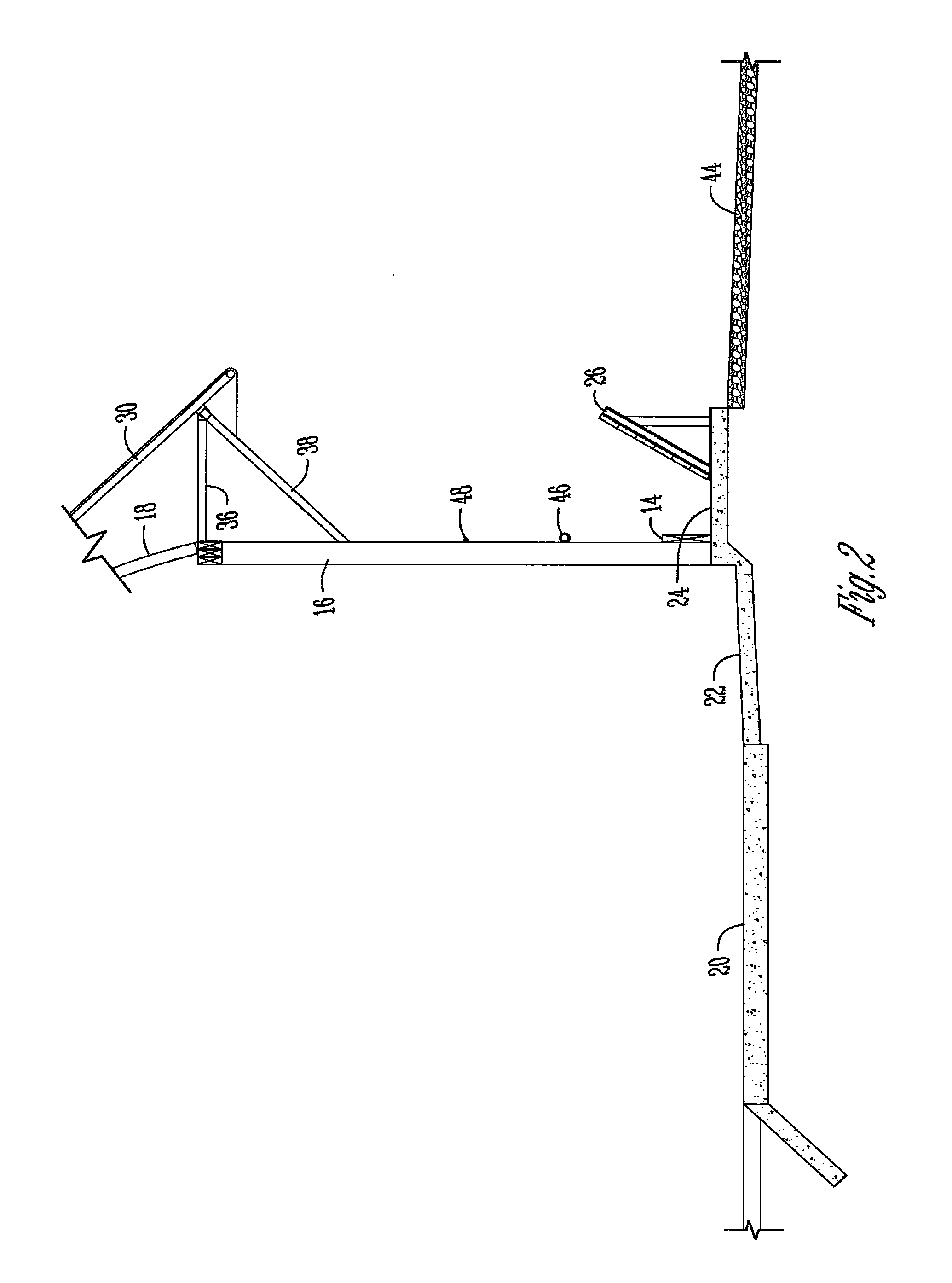Cattle Feeding System and Shelter to Create a Controlled Environment
a feeding system and shelter technology, applied in the field of cattle feeding system and shelter, can solve the problems of reducing feed efficiency, disease development, reducing feed efficiency, etc., and achieves the effects of reducing pollution, facilitating repair and replacement, and enhancing cleanliness
- Summary
- Abstract
- Description
- Claims
- Application Information
AI Technical Summary
Benefits of technology
Problems solved by technology
Method used
Image
Examples
Embodiment Construction
[0035]The beef shelter system of the present invention creates a controlled environment that incorporates and utilizes the cattle's natural behavior and herd instincts. These behaviors and instincts include:[0036]to seek shade away from summer sun;[0037]to seek out wind protection to prevent wind chill;[0038]to keep their hair coats dry (no snow or chilling rain);[0039]to stay off frozen lumpy ground (no bruised hooves and lameness);[0040]to stay out of the mud (no foot rot or hair damage);[0041]to lie down on a dry bedding pack (no bruising or pressure sores);[0042]to have easy access to feed;[0043]to have easy access to water;[0044]to be free from flies;[0045]to stay in small groups;[0046]to seek a quiet protected area to rest and ruminate;[0047]to seek a concrete free area to stand (prevent hoof and leg stress); and[0048]to seek to defecate and urinate away from feed and water.
[0049]The shelter system has a roof over the entire cattle feeding area to prevent manure runoff resulti...
PUM
 Login to View More
Login to View More Abstract
Description
Claims
Application Information
 Login to View More
Login to View More - R&D
- Intellectual Property
- Life Sciences
- Materials
- Tech Scout
- Unparalleled Data Quality
- Higher Quality Content
- 60% Fewer Hallucinations
Browse by: Latest US Patents, China's latest patents, Technical Efficacy Thesaurus, Application Domain, Technology Topic, Popular Technical Reports.
© 2025 PatSnap. All rights reserved.Legal|Privacy policy|Modern Slavery Act Transparency Statement|Sitemap|About US| Contact US: help@patsnap.com



